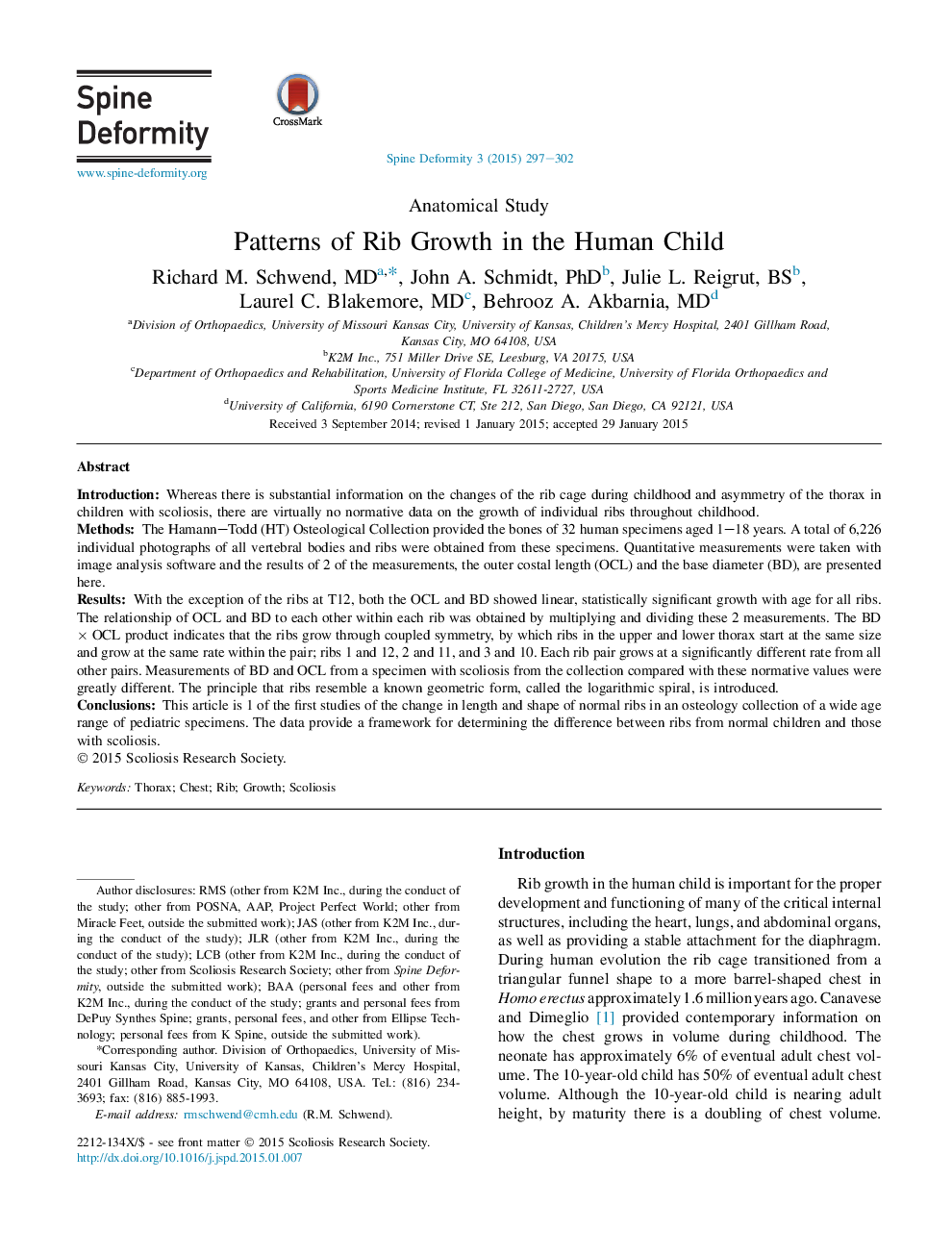| Article ID | Journal | Published Year | Pages | File Type |
|---|---|---|---|---|
| 4095210 | Spine Deformity | 2015 | 6 Pages |
IntroductionWhereas there is substantial information on the changes of the rib cage during childhood and asymmetry of the thorax in children with scoliosis, there are virtually no normative data on the growth of individual ribs throughout childhood.MethodsThe Hamann–Todd (HT) Osteological Collection provided the bones of 32 human specimens aged 1–18 years. A total of 6,226 individual photographs of all vertebral bodies and ribs were obtained from these specimens. Quantitative measurements were taken with image analysis software and the results of 2 of the measurements, the outer costal length (OCL) and the base diameter (BD), are presented here.ResultsWith the exception of the ribs at T12, both the OCL and BD showed linear, statistically significant growth with age for all ribs. The relationship of OCL and BD to each other within each rib was obtained by multiplying and dividing these 2 measurements. The BD × OCL product indicates that the ribs grow through coupled symmetry, by which ribs in the upper and lower thorax start at the same size and grow at the same rate within the pair; ribs 1 and 12, 2 and 11, and 3 and 10. Each rib pair grows at a significantly different rate from all other pairs. Measurements of BD and OCL from a specimen with scoliosis from the collection compared with these normative values were greatly different. The principle that ribs resemble a known geometric form, called the logarithmic spiral, is introduced.ConclusionsThis article is 1 of the first studies of the change in length and shape of normal ribs in an osteology collection of a wide age range of pediatric specimens. The data provide a framework for determining the difference between ribs from normal children and those with scoliosis.
